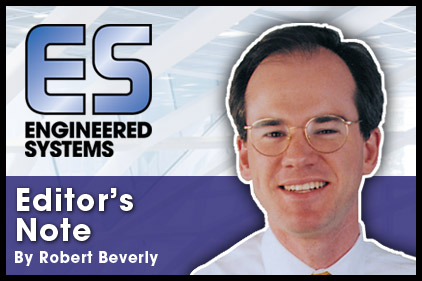When a group from outside the industry takes a look at a piece of the HVAC sector, you can get some interesting snapshots and perspectives. Pike Research (a part of Navigant) recently conducted some research about the global prospects for thermal storage over the next several years. The horizon doesn’t look too bad for TES, either, according to Pike, who expects sales in the area to expand to $3.6 billion in the next seven years.
This becomes a little more impressive when you factor in what the report recognizes:
“Even its most ardent advocates recognize that the greatest value for installing a system comes as part of a new project design, or when investment is triggered by a major event that requires a comprehensive upgrade.”
Attention turns around the start of each year to the matter of low-hanging fruit (and how to pick it), but that is not an advantage TES can enjoy. No quick sell as an easy individual improvement there. On the good side, research director Kerry-Ann Adamson sees a lot of potential in Europe, given the region’s combination of efficiency initiatives and overall interest in renewables. Furthermore:
“Growth is also expected in the less regulated U.S. market, however, where industry representatives project as much as a quarter of a billion dollars of investment in TES, if pending legislation is passed by Congress.”
So things are looking up here, too … assuming Congress does something! We’ll keep you posted.
PERFORMANCE IN A SINGLE BOUND
Here’s a late addition to the news pile. You’ve got your events for nonresidential buildings, your events for smart buildings, and even your annual events for cold-weather buildings. I know some of you just got back from Dallas, but you can add to that list a fitting track for next year’s ASHRAE meeting in New York: the Tall Buildings: Performance Meets Policy track.
As you’d expect, the Society is looking for content on topics especially near and dear to the staffs and designers for vertically exceptional buildings: building pressure, envelope (infiltration/exfiltration), elevators (within the BACnet sphere now, as you may recall), carbon, and even waste handling. There is absolutely no truth to the rumor that that last subject will be addressed in a seminar titled “Chutes & Bladders.”
In slightly more familiar territory, ASHRAE also wants to look at how building information systems and hydronic system design can perform best in these atypical environments.
If none of this convinces you to go to www.ashrae.org/newyorkand respond to the call for papers, maybe you’ll go just to find out what they mean when the description distinguishes between merely “tall buildings” and “super-tall buildings.”






